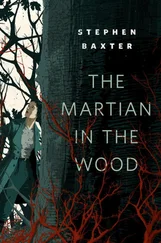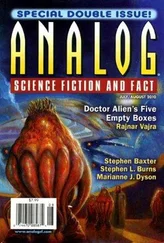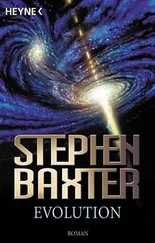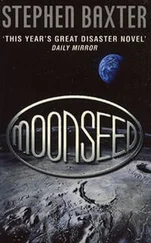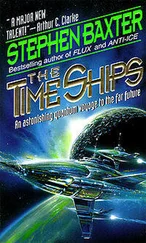“It was peanuts,” Malenfant growled. “And anyhow I don’t know why the hell you Congress critters can’t just make a simple decision.”
Maura sighed. “Federal government is a complex thing. If you don’t use the processes right—”
“And,” Emma said, “next year looks even worse. The bad guys all sources of federal funding we budgeted for and have put in place recision and reprogramming processes to—”
“Then we rebudget,” Malenfant said. “We cut, trim, rescope, find new funds.”
“But the investors are being frightened off,” Emma said. “That’s the next point. It started even before the launch, Malenfant. You knew that. Now they’re hemorrhaging. The problems we’ve had with the regulatory agencies have scared away even more of them.”
“But,” Cornelius Taine said evenly, “we must continue.”
Oh, Christ, Emma thought.
Cornelius looked from one to the other, his face blank. “Don’t any of you understand this? Who do you want to appropriate the Solar System? The Russians? The Chinese? Because if we fail now, that’s what will happen.”
Emma said sharply, “I’ll tell you the truth, Cornelius. From where I’m sitting you’re part of the problem, not the solution. No wonder the investors took flight. If any of your kook stuff has leaked out—”
Cornelius said, “The Carter catastrophe is coming no matter what you think of me.”
Maura frowned. “The what?”
Emma took a breath. “Malenfant, listen to me. Everything we’ve built up so far will be destroyed. Unless we start to take action.”
“Action? Like what? A sellout to NASA?”
“Maybe. And you have to cut your links with this character.”
Cornelius Taine smiled coldly.
Malenfant’s hands, clasped behind his back, showed white knuckles.
The meeting broke up without agreement on a way forward. And on the way out, Maura whispered to Emma, “Carter? Who the hell is Carter?”
Emma didn’t get to her apartment until midnight that night. When she walked in the door she told the TV to turn itself on. And there, on every news channel, was Cornelius Taine.
Cornelius Taine:
So, Dr. Taine, you’resaying that these people from the future — the ones you call downstreamers — have reached into the past, to us. To send a message.
Yes. We believe so.
But if the downstreamers exist — or will exist — they survived this catastrophe of yours. Will survive. Whatever. Right? So why did they need to send a message?
You’re asking me about causal paradoxes. The downstreamers are saving their grandmothers, us, from drowning. But if she had drowned they wouldn’t even exist, so how can they save her? Right?
Umm. . . yeah. I guess —
There’s a lot we don’t understand about time. What happens if you try to change the past is at the top of the list. Let me try to explain. It is a question of transactions, back and forth in time.
The Feynman radio works on the notion of photons — electromagnetic wave packets — traveling back in time. Fine.
But photons aren’t the only waves.
Waves lie at the basis of our best description of reality. I mean, of course, the waves of quantum mechanics. These waves represent flows of — what? Energy? Information? Certainly they crisscross space, spreading out from every quantum event like ripples.
We have good equations to tell us how they propagate. And if we know the structure of the waves we can tell a great deal about the macroscopic reality they represent. A clumping of the waves here means this is the most likely place to find that traveling electron emitted from over there.
But, like electromagnetic waves, quantum wave packets emitted from some event travel both forward and backward in time. And these backward waves are vital to the structure of the universe.
Suppose you have an object of some kind that changes the state of another: a source and a detector, maybe of photons. The source changes state and sends quantum waves off into future and past. The future-traveling wave reaches the detector. In turn this emits waves traveling into both future and past, like echoes.
Here’s the catch. The quantum echoes cancel out the source waves, both future and past, everywhere — except along the path taken by the ordinary retarded waves. It’s like a standing wave set up between source and receiver. Because no time passes for a wave traveling at light speed, all of this is timeless too, set up in an instant.
It’s called a transaction, as if source and detector are handshaking. “Hi, I’m here.” “Yes, I can confirm you are.”
So there really are waves traveling back in time?
So it seems. But you don’t have to worry about them.
I don’t?
No. There are no back-in-time paradoxes, you see, because the backward waves only work to set up the transaction; you can’t detect them otherwise.
And that’s how our reality works. As the effects of some change propagate through space and time, the universe knits itself into a new form, transaction by transaction, handshake by handshake.
Umm. And this is quantum mechanics, you say? So what happened to all that quantum funny stuff? The collapsing wave function, and Schrodinger’s cat, and the Many Worlds Interpretation, and —
Oh, you can forget all that. We study that today the way we study Roman numerals. Now that we know what quantum mechanics is really all about, it’s hard to imagine how people in those days thought like that. Do you follow?
Umm. . . Madeleine?
Let me get this straight. If I go back and change the past, I create a new universe that branches off at that point… right? If I kill my grandmother, I get two universes, one where she lived and I was born, one where she dies and I was never born —
No. Perhaps you haven’t heard me. It just doesn’t work like that.
There is only one universe at a time. New universes may bud off from others, but they are not “parallel” in the way you say. They are separate and entire, with their own self-consistent causalities.
So what happens if I go back in time and do something impossible, like kill my granny? Because if she dies, I could never be born, and could never have killed her.
Each quantum event emerges into reality as the result of a feedback loop between past and future. Handshakes across time. The story of the universe is like a tapestry, stitched together by uncountable trillions of such tiny handshakes. If you create an artificial timelike loop to some point in spacetime within the
negative light cone of the present—
Whoa. In English.
If you were to go back in time and try to change the past, you would nullify all those transactions, the handshakes between future and past. You would damage the universe, erasing a whole series of events within the time loop.
So the universe starts over, from the first point where the forbidden loop would have begun to exist. The universe, wounded, heals itself with a new set of handshakes, working forward in time, until it is complete and self-consistent once more.
Then changing the past is possible.
Oh, yes.
Tell me this, Dr. Taine. According to this view, even if you do go back and change the past, how do you know you succeeded? Won ‘tyou change along with the past you altered?
We don’t know. How could we? We’ve never tried this before. But we think it’s possible a conscious mind would know.
How?
Because consciousness, like life itself, is structure. And structure persists as the cosmic tapestry changes.
Читать дальше
Конец ознакомительного отрывка
Купить книгу

